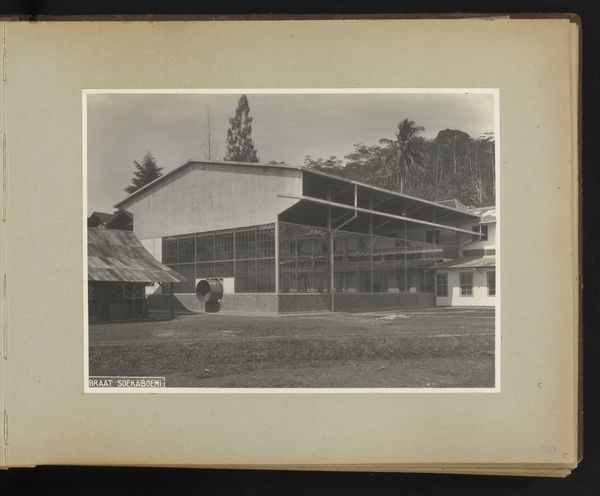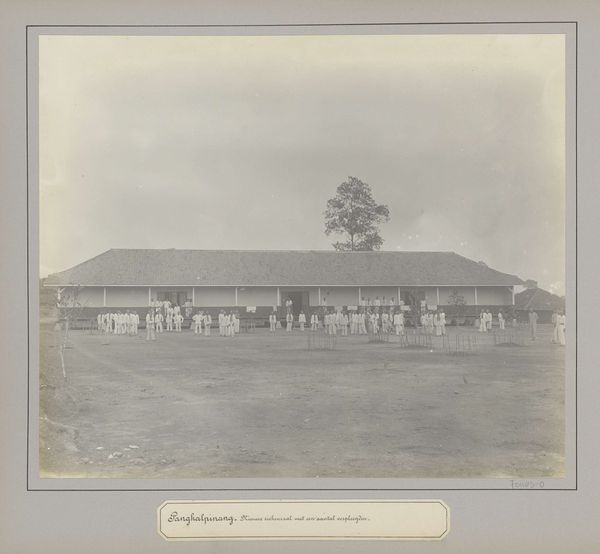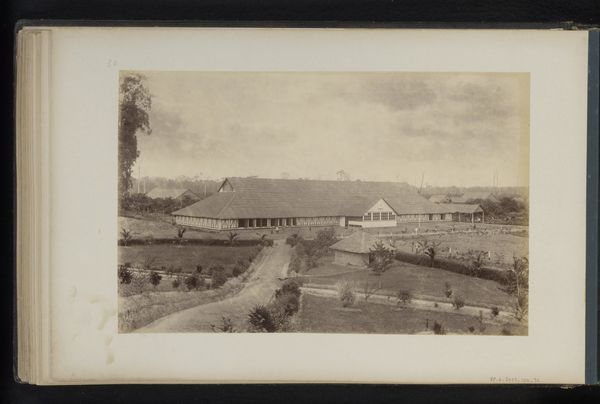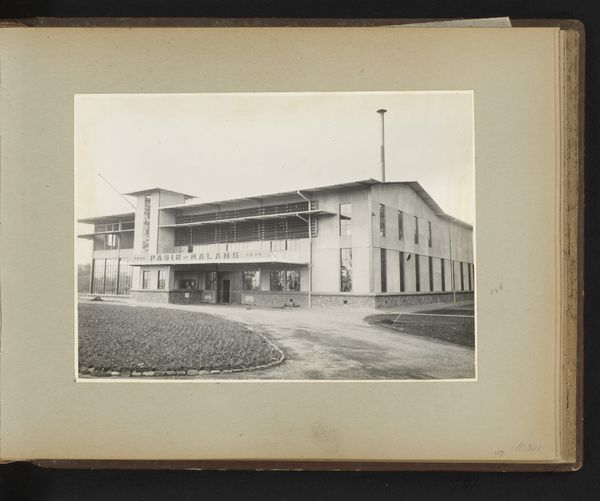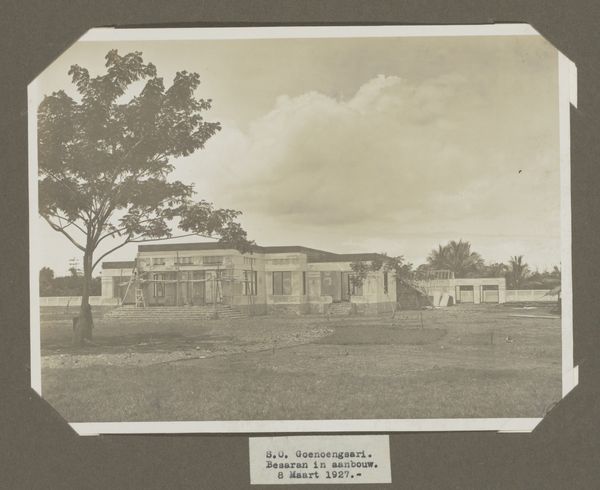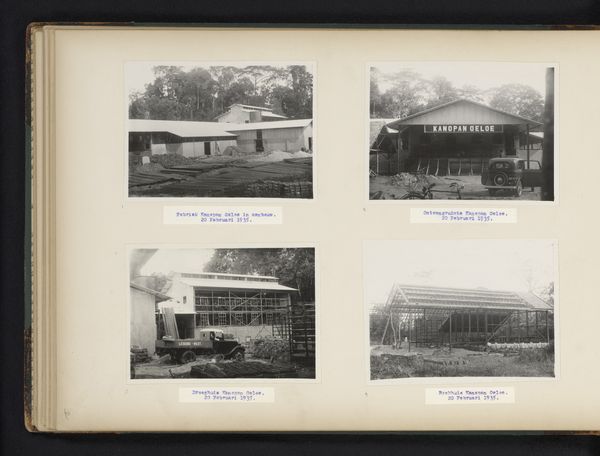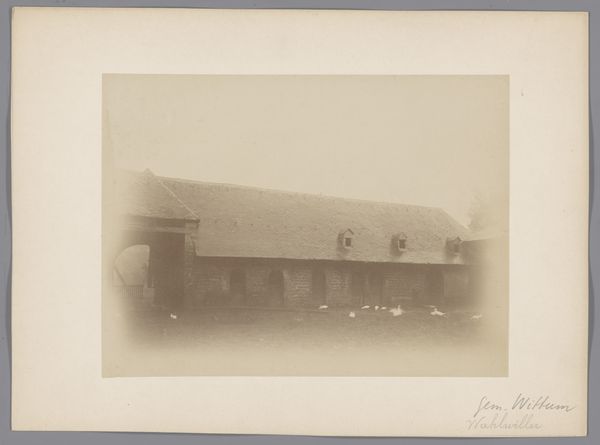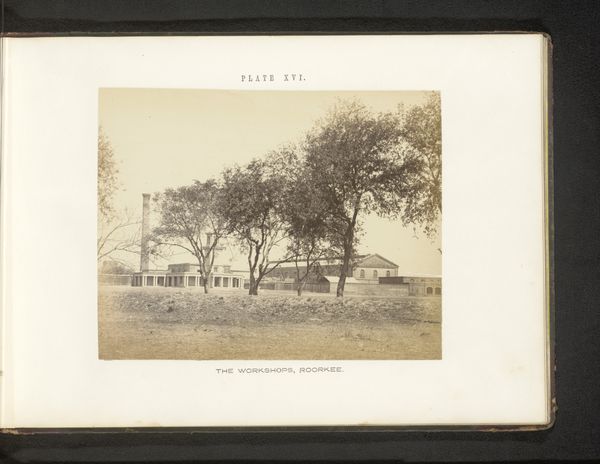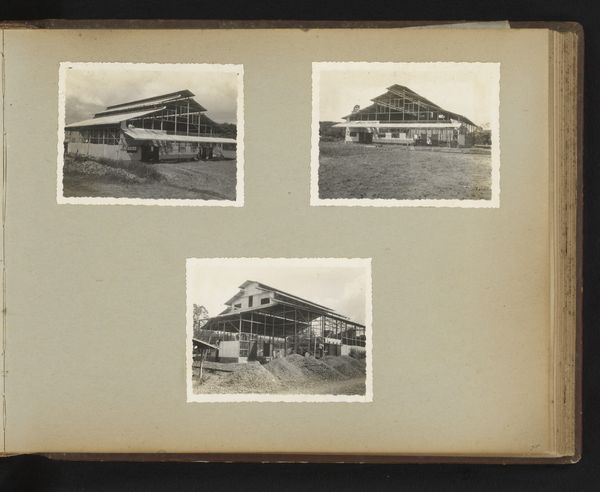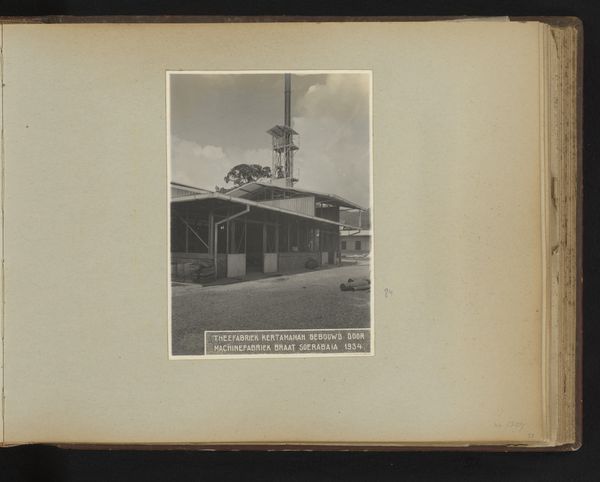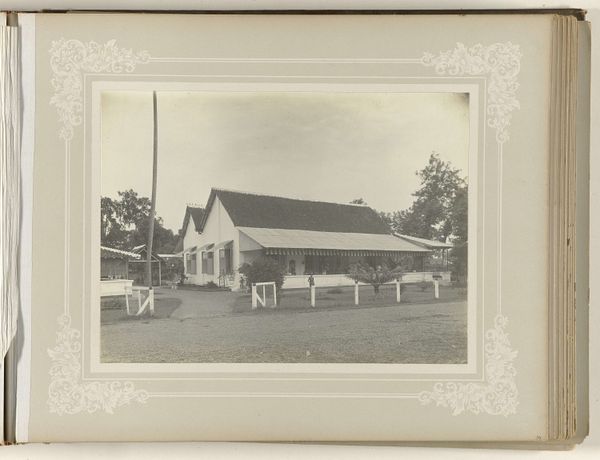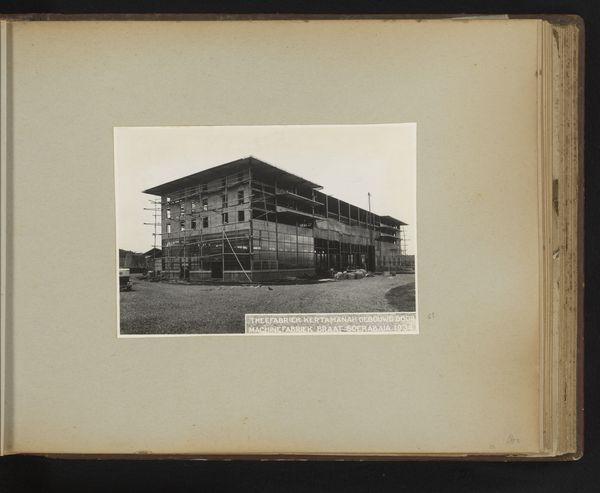
photography
#
photography
#
cityscape
#
modernism
Dimensions: height 173 mm, width 235 mm, height 250 mm, width 320 mm
Copyright: Rijks Museum: Open Domain
Curator: It gives me a very desolate, eerie impression. The factory, while large, feels abandoned against that backdrop of almost suffocating nature. Editor: We're looking at an architectural photograph, likely captured between 1931 and 1937. The work is simply titled "Fabrieksgebouw", meaning Factory Building, now housed here at the Rijksmuseum. Its creator is unknown, lending an additional layer of mystery. Curator: That sense of anonymity almost amplifies the photograph's emotional impact. The building seems divorced from context; the artist's absence becomes symbolic of its disconnected state. It makes me wonder about the people who might have inhabited the building and worked in the factory. Did they leave willingly, or were circumstances a catalyst? Editor: It makes you think about the rapid industrialization that was occurring during this time period and wonder if the factory shut down due to financial problems. During that time the industry was growing quickly and developing new factories all over. What purpose did factories such as these play in the cultural climate? Curator: Indeed. The factory looms as this austere shape and seems like it could have a lot of different connotations within its visual language: it appears formidable, but perhaps that symbolizes the powerful allure that industrial advancement offered for the economy and society. It feels intentionally severe and without a flourish. It is trying to state something by presenting the factory in this light. Editor: And the interplay with nature… It underscores the tension between human progress and the natural world that defined so much of early modernism. It presents itself through what we are familiar with but also disrupts it slightly. This picture shows a new world, growing very quickly. Curator: Well, the modernist aesthetic strips away anything considered extraneous. I suspect it reflects a collective desire to distill meaning to its very core, representing hope and progress with utilitarian buildings. I'll think about it some more. Editor: This photo offers a striking study into how anonymous public architecture in a historical shot conveys a specific atmosphere.
Comments
No comments
Be the first to comment and join the conversation on the ultimate creative platform.
